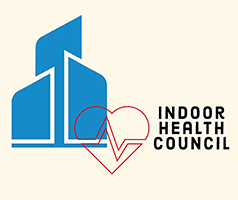Should We Use Environmental Monitoring Devices?
Lifewire recently interviewed IHC for an article on personal devices that measure pollution. Below are their questions and our responses.
1) Why are personal devices that measure pollution important?
Personal environmental monitoring devices can be important because risk = hazard x exposure + vulnerability.
Not everyone is equally vulnerable to the same hazard and exposure, but for those who have specific vulnerabilities (e.g., asthma, chemical sensitivity, immune system issues, etc.) knowing potential exposure levels is important as it relates to possible risk/harm.
2) What are some personal devices that measure pollution? Which are the best and why?
There are at least two kinds of devices, those that measure “pollution” in a room or area, and those that measure personal exposure to pollutants.
Room or area air-quality monitors include those that can measure carbon monoxide (CO) which is a deadly but odorless invisible gas (these are absolutely vital when exhaust from vehicles, heating, cooking or combustion gases is a concern), carbon dioxide (CO2) — which we exhale — as high CO2 levels are unhealthy and may serve as a proxy for proper or improper ventilation, particle counters that count airborne particles in the 2.5 micron size range which may impact those with or cause respiratory problems, and volatile organic compound (VOC) detection devices.
Airborne particles are the simplest to measure, and units such as those made by Dylos (e.g., Dylos DC1100), work as long as you remember that sampled room levels are different than what is personally inhaled. Still reducing airborne dust has several benefits: 1) Less to inhale, 2) Less to remove later as it settles (less dusting/cleaning), and 3) Less to build up in electronics causing shortened component life through overheating and a possible fire hazard.
VOC detection devices are of somewhat limited usefulness unless you are tracking a specific VOC such as formaldehyde; and even then, VOCs exist in mixtures or chemical soups, so isolating one or even several may not convey the risk depending on individual vulnerabilities and other unknowns.
There are a number of personal devices that can be worn by a lanyard around the neck, etc. which provide a more immediate measurement of individual exposure; though, once again, their usefulness depends on many factors.
3) How can personal devices crowd-source data on pollution? Why is this useful?
Our indoor and outdoor environments are not mutually exclusive closed systems, i.e., what’s outside usually gets inside and vice versa (apart from cleanrooms, e.g., where microchips are made). Crowdsourcing data that is uploaded to a regional processing center could provide a “snapshot” and help predict health trends or risks; provided the sampling methods are well defined for what you want to measure and why.




